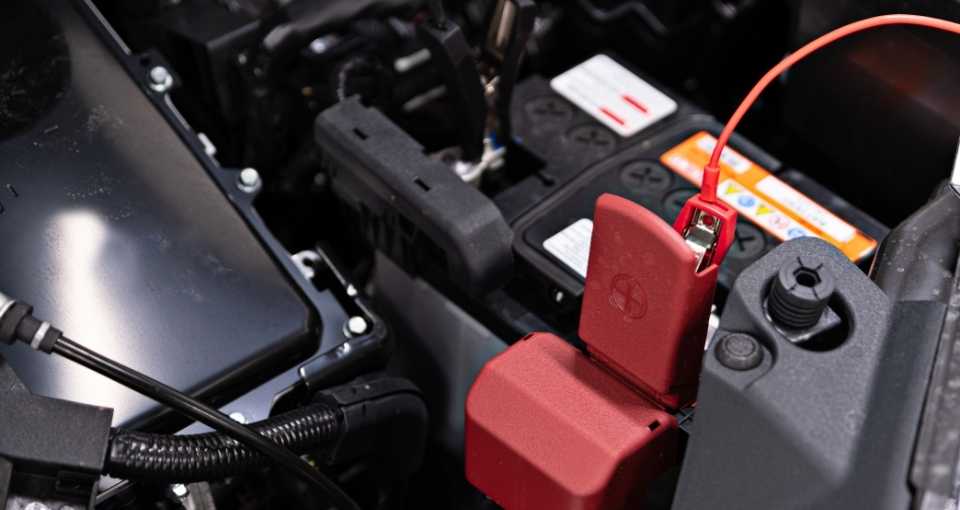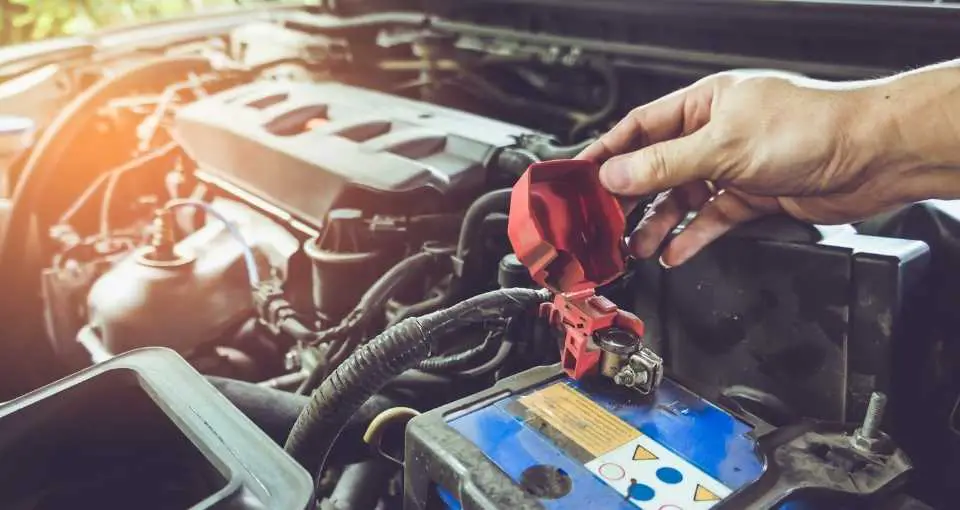Since their implementation in internal combustion engine vehicles, batteries have been improved; but since the invention of free maintenance batteries in the early 1970’s their design hasn’t changed much.
The main goal of batteries is to provide the starter motor with electric current. Once the car starts, the battery works like a buffer between the engine’s alternator and the vehicle’s electrical systems. Engines have an electric generator called alternator that charges the battery while the engine is running.
Automotive alternators have a voltage regulator that is in charge of delivering a constant voltage to the battery terminals.
A standard engine generally requires around three percent of the battery capacity to be started up. Batteries are designed to deliver a peak of current while the engine is being cranked. The capacity of a battery to deliver these peaks is measured by their manufacturers and can be found at their labels or in their data charts.
There are several ratings called “cranking amperage”; they are classified depending on the battery’s operating conditions. The most commonly used term is Cold Cranking Amperes, (CCA). CCA is the amount of current that a battery can provide for 30 seconds at 0° Fahrenheit. Depending on the size and model of a battery, it starts from around 250A and can reach 650A and even more in very large batteries.
The capacity of the battery to deliver power under standard conditions and for long periods of time is measured in Amperes per hour, (AH). A vehicle with a lot of accessories will require a battery that delivers more A/H than a less equipped one.
Since cars started to come with more advanced comfort features, alarm systems, and computers, just to name a few, they have had very low power consumption, which doesn’t stop even when they are not being used. If a car is left unused for several days, these components can drain the battery and you won’t be able to crank it up.
Other factors that can discharge a battery when the engine has been unused are, for example, forgetting to turn off the headlights or the interior light, leaving the radio on, or having installed an aftermarket head unit that keeps consuming energy when the ignition switch is off. In addition, batteries naturally tend to lose about 1% of their charge every day.
Vehicle batteries have a lifespan that varies according to the quality of the battery, the vehicle in which it has been installed, driving habits, weather conditions and some other factors, but it generally goes from 3 to 6 years. It’s important to know that excessive heat is one of the main causes of battery failure.
Extremely low temperatures can also lead to battery failure. Batteries hold chemicals which make them work. Any overload that produces heat inside the battery may damage the battery’s internal components.
When a battery is reaching the end of its life it’s going to lose its capacity of holding its charge. That means that it will lose its charge much faster than a new battery.
When a vehicle has been left unused, an old battery will be drained faster if some electric element of the car has been left on. The engine will be harder to start, and this will be more noticeable under cold weather.
Another sign that a battery may not be in optimal shape is when lead sulfate can be seen forming on the battery terminals; however, this lead sulfate can be cleaned up and it’s not always necessarily going to appear again.

Three Types of Battery Chargers
Battery chargers can be classified into three basic groups:
Trickle Chargers
A trickle charger is a kind of battery charger, but it is also a method to charge a battery. Trickle charging is charging a battery at constant and low amperage.
The concept behind trickle charging is to charge a battery with a rate similar to its self-discharging rate, which would be ideal to keep a battery fully loaded while it is being stored.
However, this wasn’t always the case. The first trickle chargers and current cheap models come with knobs or buttons that allow the user to choose how many Amps will be delivered to the battery. The idea is that if you can wait long enough, the user will be able to set the charger to a low amperage, let’s say 1 or 2 amps, so if a battery of 65AH was to be charged, it would take between 65 to 34 hours and a half to have it fully loaded. But if you can’t wait so long, you could charge it at, let’s say, 10 or 20 amps, drastically reducing the loading time.
This could reduce the battery lifespan, but it would save a lot of time. The problem with these simple chargers is that they don’t have any circuit to measure the state of charge of the battery or any safety feature at all, but just a fuse.
This means that they can’t be left plugged into a car unsupervised; doing this is dangerous because they don’t have a cut off, they keep charging and charging the battery, and they need to be manually unplugged and switched off.
Some manufacturers added extra functions to these chargers, like a “jump starter” mode. It requires 2 persons to do this. One would press a switch or turn a knob on the charger while the other would give ignition to the engine.
When the “jump starter” mode is on, the charger will feed the battery with a high current pulse in order to provide the battery with enough power to make the starter motor of the car spin and turn the car’s engine ON.
As technology improves, a new generation of trickle chargers has emerged. They can monitor the load level of a battery, and they can end the charge when the battery is full. These chargers are sometimes known as “Float Chargers”.
Most of these chargers can also be used as “conditioning chargers” or “maintenance chargers”. They can stay plugged to a car while it’s being repaired, for example, and they will keep the battery charge full. They automatically stop charging when the battery charge reaches to the top, and they resume charging it again when the charge level has dropped by about 20 percent.
These chargers can also be used to ensure that a battery installed in a vehicle that isn’t frequently used remains completely charged. They are designed to work for long periods of time, from days to even months, depending on the model of the charger.
The manufacturers of these chargers claim that they are very safe to use and can be left connected to a battery for extended periods of time; however, I would check the charger and the connections regularly to avoid any damage to the battery, or any accident that can be caused by a failure in the system or the battery itself.
A really good and easy to use trickle charger by FOVAL can be found on Amazon here.
Smart Battery Chargers
These chargers are made to charge batteries as quickly and safely as possible. They monitor the battery’s condition and program themselves to run a charging program that will change into a maintenance cycle as soon as the battery’s charge is completed.
This will prevent the battery from being overcharged, thus overheated, and will do the job without shortening the battery’s lifespan.
All smart battery chargers perform a safety charge, but their accuracy and functions vary a lot depending on the brand and the price range of the charger.
Most microprocessor controlled chargers are able to perform different charging functions; they can even be used to keep a battery fully charged by using very low power.
That’s why some articles and specialized press sometimes call them “Trickle Chargers with a Brain”. That phrase doesn’t make some Smart Battery Chargers’ manufacturers happy: they claim that the charge effectiveness and the characteristics of their products are much more complex than those of a trickle charger.
Jump Starters or Jump Boxes
These devices are very useful and practical to be used in emergency situations.
Modern ones are very small; they generally use lithium batteries, which make them light. They come with a set of jumper cables attached. They have a built in micro-controller that is programmed to prevent voltage spikes that could damage the car’s electrical system.
This makes them safer than jumper cables. This kind of chargers are made only as an aid to start a car; once the car has started, the alternator is going to recharge the battery.
Jump Starters of Jump Boxes are not meant to charge batteries. If the car could be started, the alternator would have to charge the battery, requiring it to leave the engine revved for at least half an hour.
Safety Warnings and Precautions When Using Car Battery Chargers
Major risks about charging a battery are fire and explosions. This could happen when a battery is being overcharged. It’s important to bear in mind that excess of hydrogen may concentrate in an enclosed space, increasing the risk of an explosion or fire. That’s why it’s never advisable to leave a battery being charged by a trickle charger unsupervised.
Another important thing to keep in mind is to choose a proper ground location. The negative terminal of the trickle charger should be connected to a solid ground, like the engine block or an unpainted bolt in the chassis.
Try to avoid plugging the crocodile clamp of the charger to the negative terminal of the battery; doing this increases the risks to cause an explosion or fire. If the charger’s user manual indicates to do so, try to be careful and to make the connections smoothly, avoiding any chance to provoke any sparks.
Never try to jump start a car with a damaged battery and check for leakages, strange smells and check for corrosion on the terminals. If you notice any of these signs, it’s better not to take any risks and avoid charging that battery.
May I start my car while the battery charger is still connected to the battery?
It all depends on the kind of charger that you are using. The answer in most cases is yes.
Below you will find a list of different kinds of chargers and what could happen if you crank up your engine while the charger is still connected to the battery:
Old or standard Trickle Charger with no jump start function:
A standard trickle charger is designed to handle currents considerably lower than the current needed by a starter motor to be turned on (200Amps approximately).
When the starter motor attempts to draw the power that it requires from the battery, the charger, when plugged, becomes a part of the circuit too, gets overloaded and ends up with its fuse burnt in the best of cases, or damaged if the fuse doesn’t burn fast enough to prevent damage to the charger.
If the battery has been fully charged, the risks of causing any damage to the charger are reduced, but it’s better not to try. Because these chargers have so little power, there is no risk to the car’s electric and electronic components to do this.
Old or simple Trickle Charger with Jump Start function:
Using this function is dangerous for the battery charger. The fuse may be burnt and sometimes the battery charger could be damaged because chargers are not designed to handle the high current levels that a starter motor could demand when an engine is being started up.
There is no risk to the car components, unless the charger keeps delivering a high current to the engine. This could overload the electric system of the car, damaging the battery and the alternator.
“Float Chargers”, “conditioning chargers” or “maintenance chargers”
You can start your car when it is connected to one of these chargers. They have
a protection mode, so in general, when they detect that the battery is demanding a lot
of power, they will switch automatically off.

When To Use a Trickle Charger
As was mentioned before, the best choice to charge a battery is a Smart Battery Charger. It can do the same job as a Trickle Charger, but better.
However, if you don’t have a big budget, you could use an improved Trickle Charger, or a conditioning/maintenance charger.
They could be useful when you are planning to store a battery for some time, – it’s always better to store a fully charged battery – so that it can be operational when you are ready to use it again.
Another good use for a trickle charger is when you live in a cold weather zone and you don’t drive your car daily, mostly if you also drive it for short distances when you do.
This way of using a car may drain a battery because the engine’s alternator will not be able to fully charge the battery under such conditions. A good Trickle Charger could be useful when you own vehicles that are not daily driven, such as weekend cars, collection cars, and track day cars.
If you want to be able to use those cars when you have the time, and you want to have them ready to use, it’s better for their batteries to be loaded so that they can be started up without troubles.
You could have a high amp charger or a car jumper to give their batteries a quick boost to get them working, but it’s a practice that drastically reduces the life of a battery. Besides, why wait to recharge the battery when you can have your favorite car ready to use at all times?
You can have a battery connected to a maintainer without the need of having it installed in the car: you can keep it stored and plugged to the charger outside the hood.
If your car has a drained battery, you could use a trickle charger to charge it, but remember that these chargers are designed to charge batteries slowly, so you can fully recharge your battery, but it will take a lot of time and patience.
Best Car Battery Charger for Under $40
You should check out the NOCO GENIUS1 charger as it operates as both a battery charger and trickle charger. Visit Amazon and take a look for yourself here.
